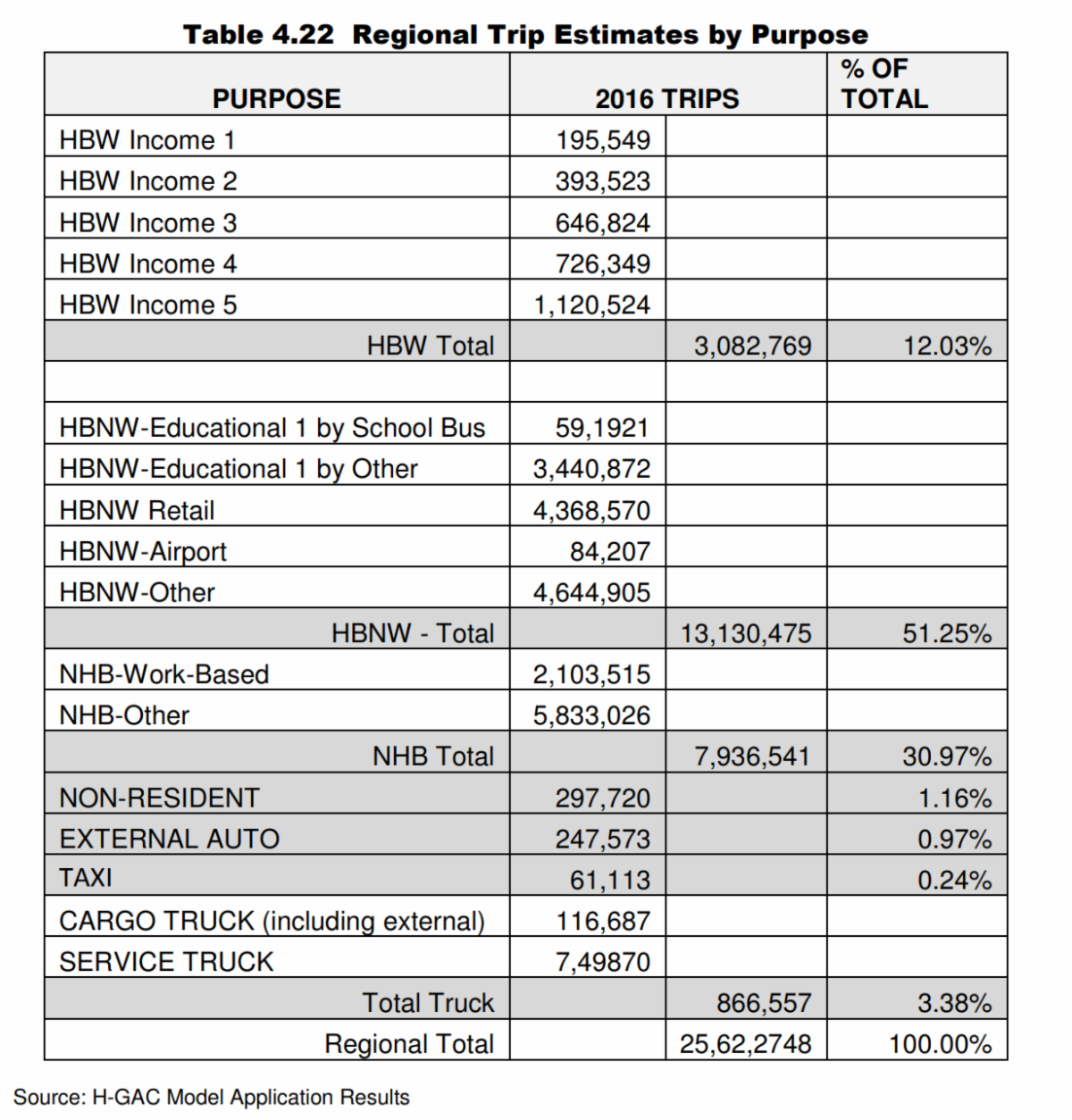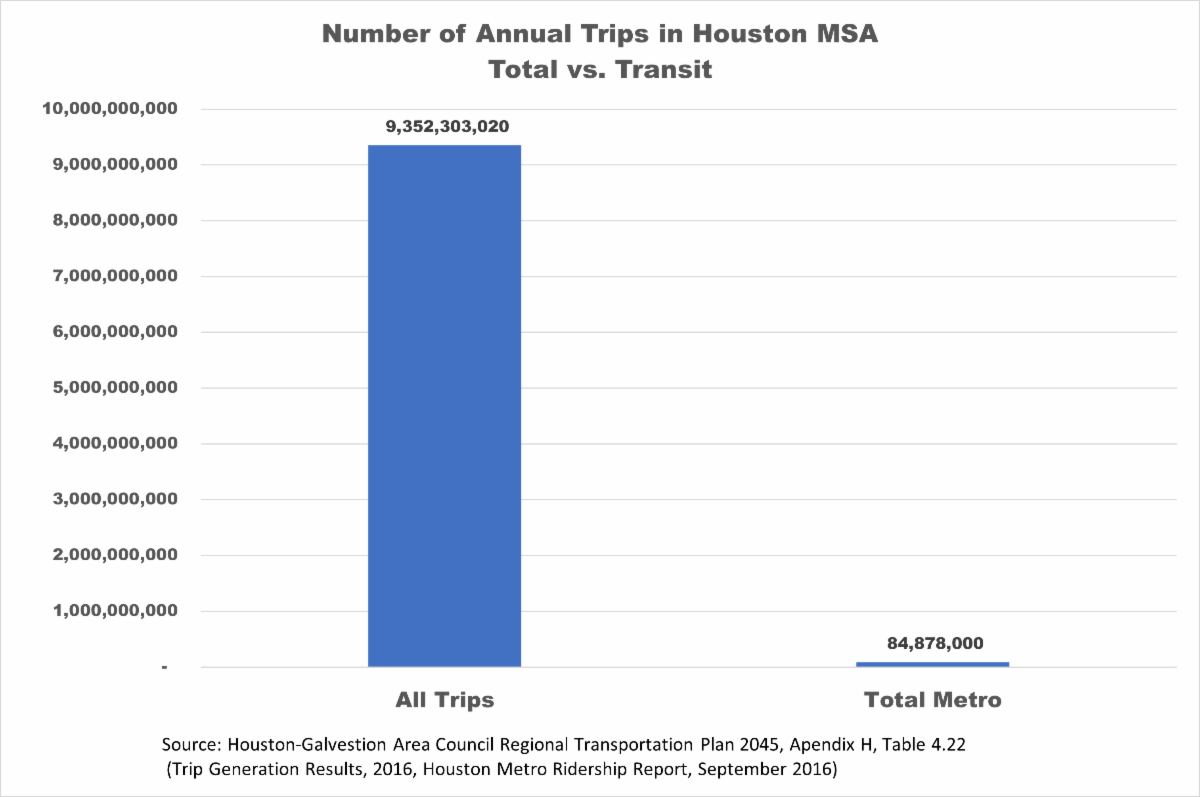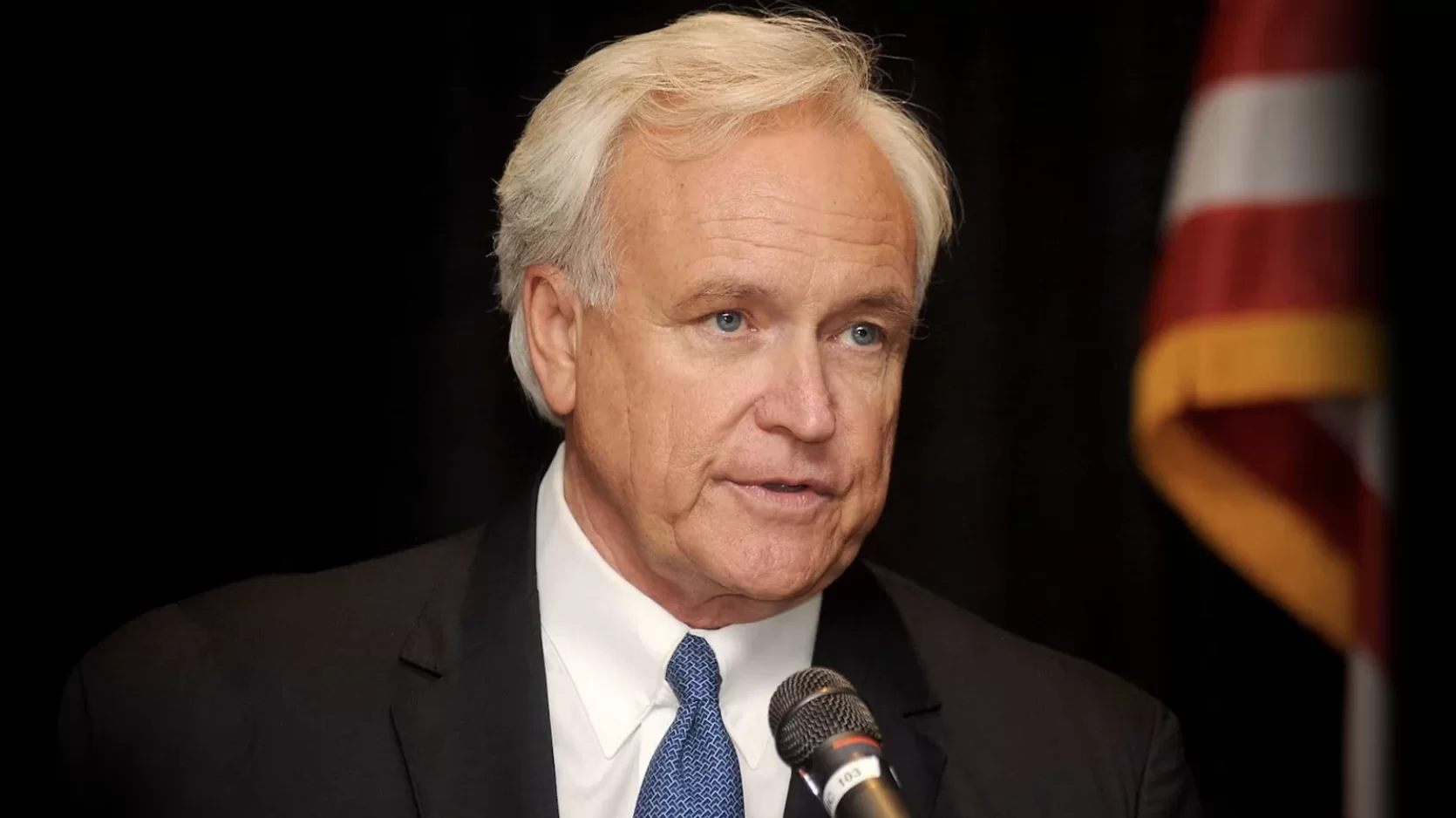In my recent survey on transit, I asked respondents to estimate the percentage of daily trips made by Americans and Houstonians on some form of transit. The average estimate for the U.S. and Houston were 7.3% and 4.3%, respectively. As we will see, these estimates are significantly higher than the actual ridership.
The estimates varied widely. About 21% estimated transit’s national share was 1% or less, while 38% of respondents made the same estimate for Houston. Over 28% of respondents estimated that 10% or more of all trips nationally were made on transit. About 17% said that for Houston.
Trying to precisely determine what share transit carries of daily trips is difficult, primarily because we only have rough estimates of how many trips Americans make on a daily basis. In contrast, we know with considerable accuracy the number of daily transit trips.
In Houston, however, we have a fairly good tool for making an estimate. The Houston-Galveston Area Council (HGAC) periodically publishes “regional transportation plans.” The most recent for our region is RTP 2045. As part of that process, planners model travel demand in the region, including an estimate of the total number of trips made in the Houston region. The RTP 2045 estimated that in 2016, there were 25.6 million daily trips in the Houston region.1

At the same time, we know Houston Metro’s total ridership for 2016 was 89 million riders or about 243,000 per day. That means that in 2016, Houston Metro carried a little less than 1% of the total trips in the region.

The population of the Houston region has increased by about 7% since 2016, so the number of daily trips in the region is probably 27-28 million currently. Also, Metro’s ridership has fallen since 2016, dropping to 164,000 trips per day currently. That means that Metro’s share of total trips today is probably something around one-half of one percent (.05%).
At the national level, the Federal Transportation Administration estimates that the average American takes about 4 trips each day. That equates to about 400 billion trips annually. Commercial trips probably add about another 30% to that number. So, say 520 billion trips per year.
Last year, according to the American Public Transportation Association, there were a little over 6 billion trips made on transit. That equates to transit accounting for about 1.2% of the total trips. Just prior to the pandemic, there were just under 10 billion daily trips on transit, or about 1.9% of all trips.
So, on a national basis, and in Houston, the contribution of transit to overall mobility is miniscule. Certainly, there are specific markets in very densely populated cities, like New York and Chicago, where transit is an important component to those cities’ overall mobility. But when it comes to analyzing the effect of transit on factors such as traffic congestion and air pollution, it is important to understand what a tiny portion of daily trips are made on transit. I will be writing soon on those two issues specifically.
I thought it was interesting that most of the respondents to my survey significantly overestimated transit share of the total daily trips made. This is consistent with much of the public polling. I think the reason that many people have such a distorted view of the importance of transit to overall mobility is the relentless propaganda campaigns of the transit industry. If you watched the recent Astros playoff games in Houston, Metro ran several ads during every game, grossly exaggerating its significance to mobility in our region. By the way, Metro is proposing to spend about $25 million of your tax dollars on “marketing and communications” in its budget this year.

